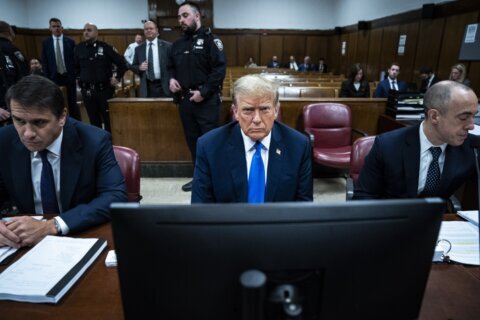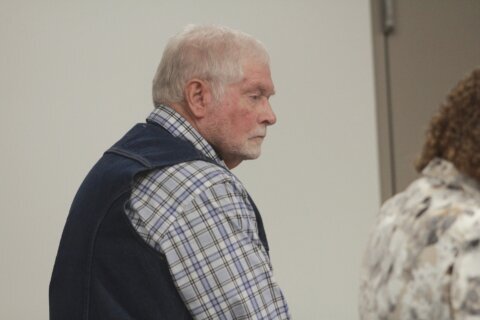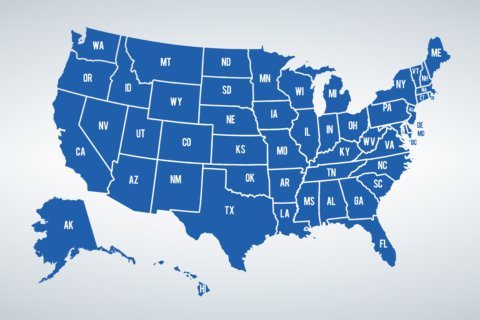News helicopters hovered as a string of SUVs zipped down the FDR Drive in Manhattan. A crowd of journalists, supporters and onlookers waited at the Manhattan Criminal Court, surrounded by police officers. All were awaiting the arrival of the defendant.
The atmosphere might have been unusual — the thousands of New Yorkers who pass through the court each year seldom draw much attention — but what happened inside was an ordinary process: an accused person turned himself in, was arrested and fingerprinted and appeared before a judge to hear the charges and enter a plea.
The spectacle outside — and the one that will surely evolve as former president Donald Trump attempts to seize control of the story of his indictment — might tempt observers to see Trump’s arrest as an extraordinary event. And it is historic: no former president has ever been indicted. But the story told in the images of Trump walking through the scuffed halls of the court building, is a story of accountability under the law — extraordinary only in its ordinariness.
The first photos of Trump in the courtroom underscore that message: he was seated at a courtroom table, flanked by lawyers and four uniformed police officers, contained and constrained in ways he seldom has been since entering electoral politics eight years ago.
As he entered the court, he delivered first a wave and then raised a fist to his supporters. But any sign of defiance had vanished by the time of his arraignment and not-guilty plea.
Beneath the familiar swoop of dyed-blond hair and thick foundation, his expression was grim and reserved. For the moment, he was just another defendant, dependent on a judge to determine his next move. And while Trump will work hard in the coming hours and days to offer a different reading of those images — and media outlets will be tempted to help him out by focusing on the spectacle — they depict not a departure from regular order, but rather its return.
Trump’s time in elected office was one marked by impunity. The man who once bragged he could shoot someone on Fifth Avenue and walk away scot-free seemed to have understood the truth of his status well before most Americans. While journalists and analysts explained how Trump flouted laws like the Emoluments Clause and the Presidential Records Act, Trump simply continued on, sensing that, as a resident of the White House, he was someone who the law could not touch. And it didn’t.
Efforts to hold Trump accountable ran instead through political processes like impeachment and congressional hearings, processes that could reveal bad acts but not redress them — certainly not while Republicans in Congress refused to play a role.
The first and second impeachments involved necessary debate and public exposure, but each started with a foregone conclusion: that the vast majority of Republicans would never turn on Trump. The January 6 Committee played out along similar lines, with Republican leaders refusing from the start to engage in a process that might end with a referral of charges against the former president.
Trump worked hard in each of those instances to degrade and invalidate the process, to treat them as illegitimate in order to blunt the findings. He is now doing the same with his indictment, arguing it is a witch hunt and a political prosecution meant to deny him a second term in office.
At his opening campaign rally in Waco, Texas, last week — a place legendary on the far-right as a symbol of deadly government overreach — Trump lashed out at the indictment. “The thugs and criminals who are corrupting our justice system will be defeated, discredited and totally disgraced,” he said, vowing to destroy the “deep state” if he is re-elected.
Since news of the indictments broke, he has been working with his team to decide how best to present himself, according to the New York Times. Should he wave to those gathered or stay silent? Should he smile or stay solemn? Should he avoid a mugshot, or ask for one?
These were questions for both lawyers and campaign aides, since Trump clearly plans to leverage the images as part of his 2024 presidential bid. Already his campaign is promoting t-shirts with digitally-created mugshots, and his campaign emails burst with warnings that after “they” come for the president, they’re coming for his voters next.
“They can try to stop me all they want with threats, indictments and even arrests,” he wrote in an April 1 email, “but they can NEVER crush the spirits of 74 million patriots who want to make our country great again!”
That escalating rhetoric, along with the unprecedented nature of Trump’s arrest, creates the perfect conditions for observers to give into the hype, to focus on the spectacle and all that goes with it. But it is this emergence of process of accountability, with all its paperwork and rules and routines repeated hundreds of times a day in places like the Manhattan Criminal Court, that is extraordinary. As images roll out showing that ultimately mundane process, it’s worth attending to how remarkably quotidian they are, and how necessary the opportunity for a small dose of justice really is.
The-CNN-Wire
™ & © 2023 Cable News Network, Inc., a Warner Bros. Discovery Company. All rights reserved.







